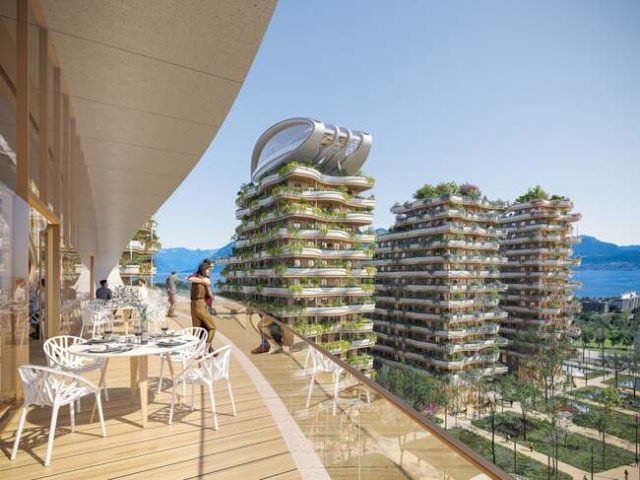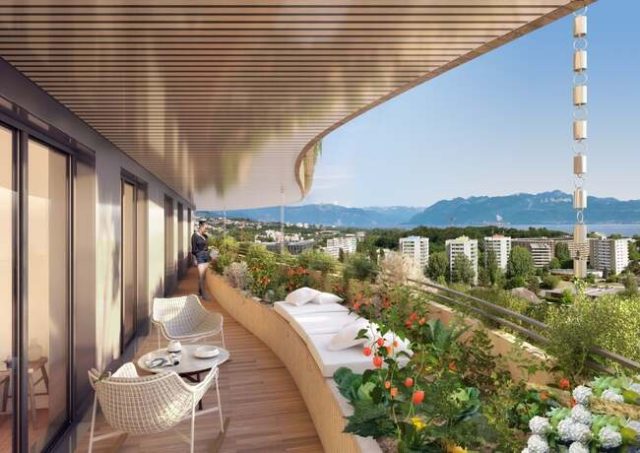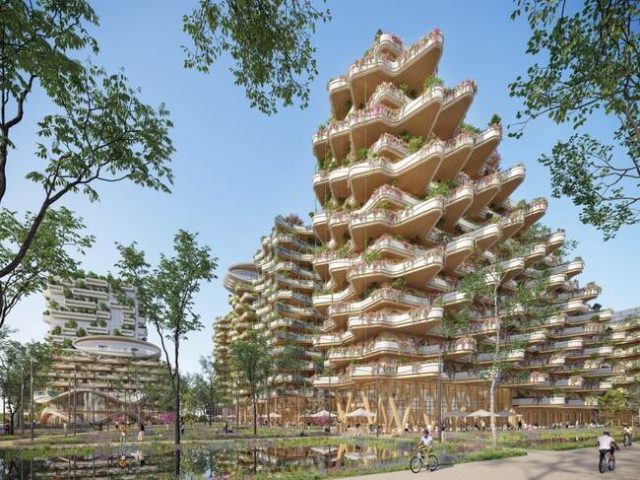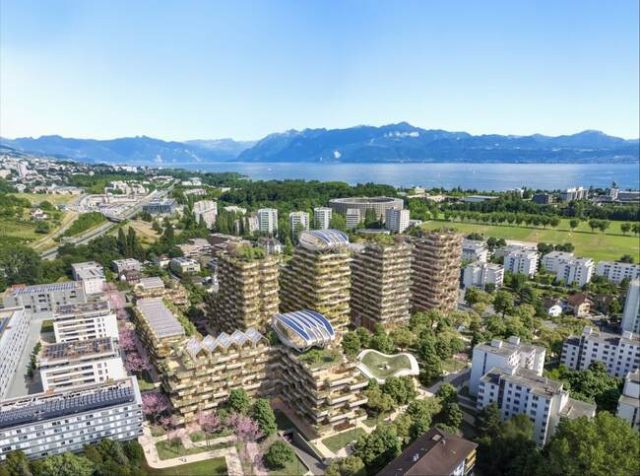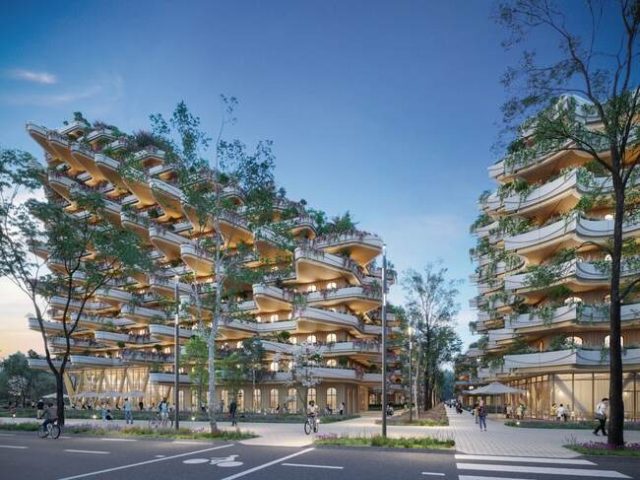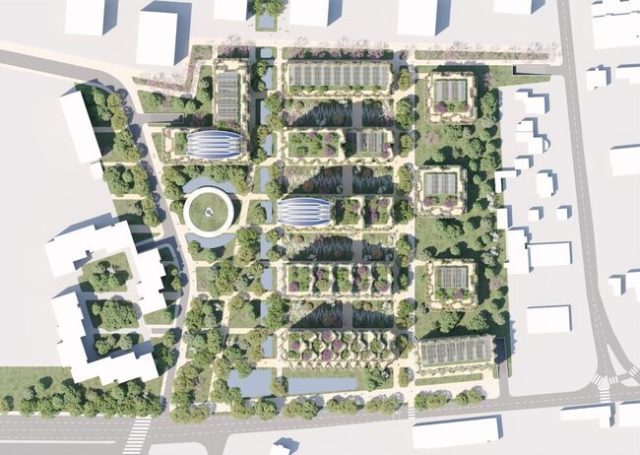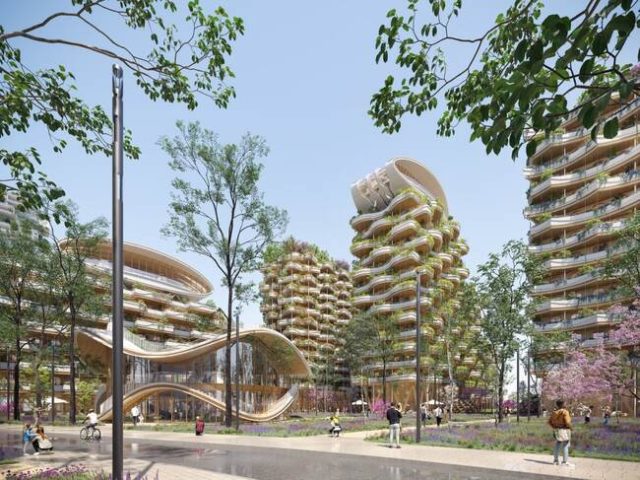
The Greenhouses, a visionary project by Vincent Callebaut Architectures, is set to transform Switzerland’s Lake Geneva district into an extraordinary car-free eco-village. Comprising 480 low-consumption homes nestled within a vast urban park, the development breathes new life into an area once occupied by Old Greenhouses. This eco-village serves as a bridge between Lake Geneva and Italy’s neighboring Piedmont region, fostering connectivity and community. In addition to the residences, The Greenhouses will feature amenities such as a large children’s nursery, restaurants, co-working spaces, and workshops.
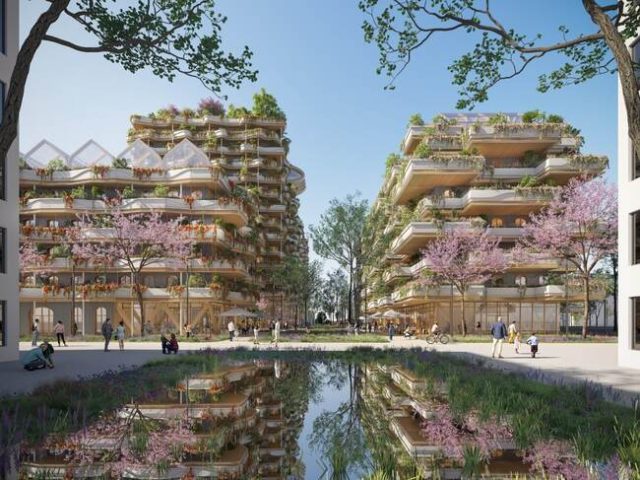
The design places a strong emphasis on sustainability, with parking cleverly tucked beneath the buildings and discreetly positioned in the western part of the district. By exclusively opening the space to pedestrians and cyclists, the architects aim to create an undisturbed, enchanting landscape that allows residents and visitors to fully immerse themselves in nature. The architectural marvel extends beyond the residences, incorporating panoramic rooftops that offer breathtaking views of the landscape. The large urban park, dominated by open land, flowering meadows, and fruit tree areas, pays homage to the local history with cherry trees reminiscent of the city’s coat of arms. The project draws inspiration from water elements, integrating phyto-purification lagoons and basins dedicated to aquaponics, permaculture, and urban agriculture.
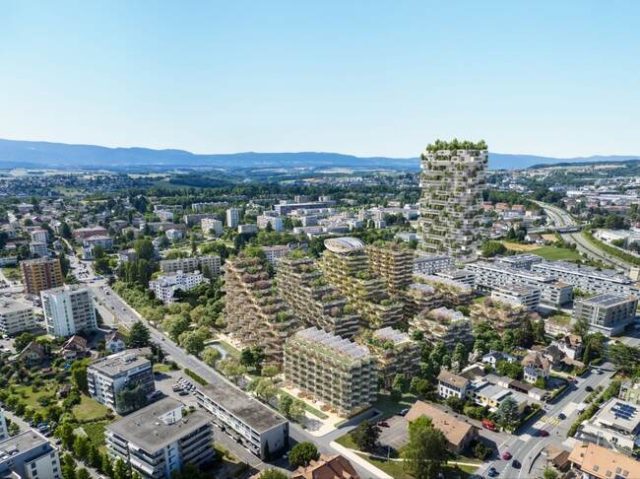
Rain chains inspired by Feng Shui adorn the buildings, choreographing the gravity runoff of rainwater from green roofs to the ground-level orchards via landscaped balconies. Each apartment is meticulously designed, with living areas oriented toward the lake and sleeping areas facing north. Panoramic balconies not only provide exceptional views of the Alps, Lake Geneva, and the Jura but also offer residents the opportunity to cultivate vegetable gardens in equipped planters. The cascade of balconies, adorned with over 30,000 plants, has a remarkable capacity to capture 170 tons of CO2, contributing to the project’s commitment to environmental sustainability.
